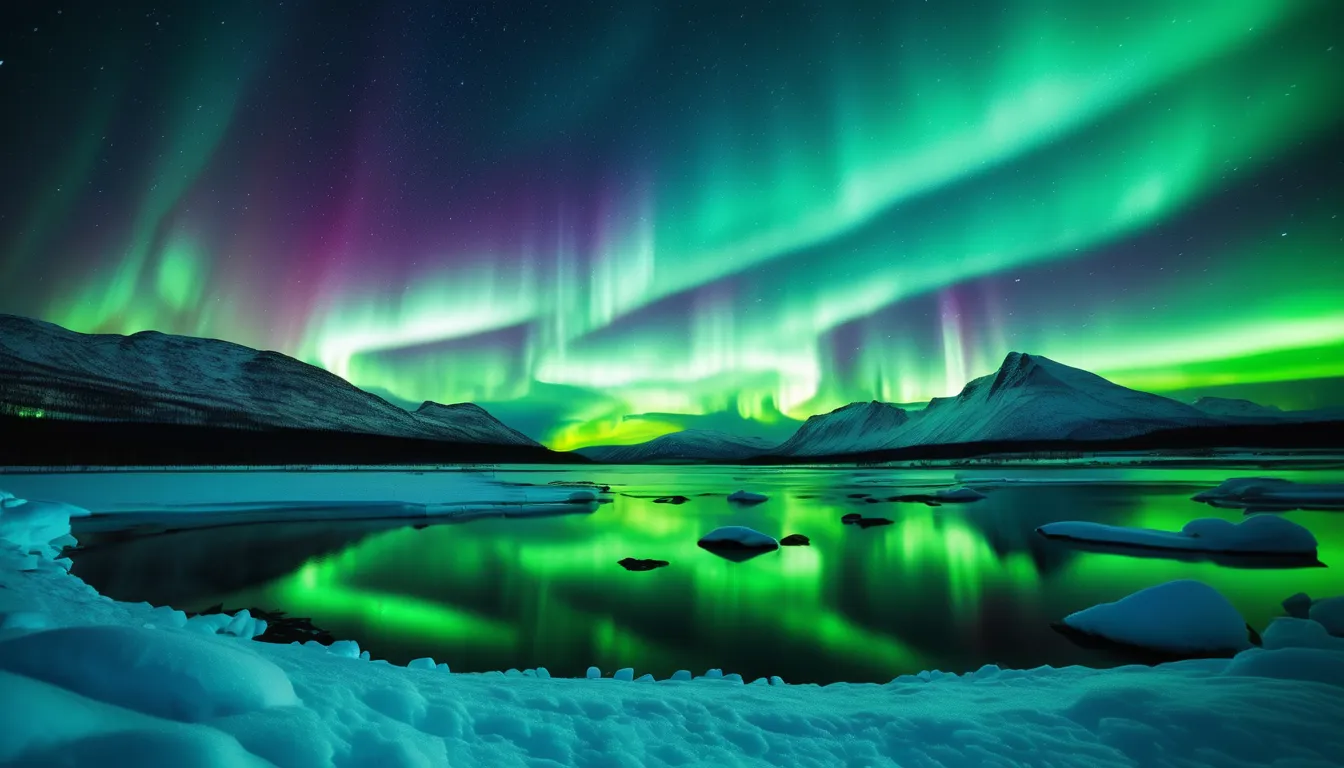The Northern Lights, or Aurora Borealis, are one of nature’s most spectacular and mesmerizing light shows. These are a natural light display that takes place above the polar regions, where solar winds collide with the Earth’s magnetic field. The Northern Lights are a bucket-list experience for travelers. Here’s a guide on the best times and places to see them.
Understanding the Northern Lights
Northern Lights are at their best viewable in high latitude lands close to the Arctic and Antarctic Circles. The lights usually take the forms of shimmering curtains and range in color from green, pink, purple to white as they dance across the night sky. Watching the Northern Lights during winter’s longest nights is unforgettable.
Best Time to See Northern Lights
Fall (September to October): The Northern Lights are more visible in early fall, with cooler temperatures and fewer tourists around. The September equinox often boosts auroral activity, making it an ideal time for peak Northern Lights viewing.
Winter (November-March): Northern Lights are most active with longer, clearer nights. Regions with minimal light pollution are best locations.
Spring, March-April: Late winter to early spring is just as good if not better for viewing the Northern Lights. One good chance is around the equinox in March.
Best Locations to Experience Northern Lights
Tromsø, Norway
Located above the Arctic Circle, Tromsø is one of the best locations globally to view the Northern Lights. The town has a wide range of activities that include dog sledding and fjord cruises.
Visitor Information:
Visit between September and April for the best chances to witness the Northern Lights in full splendor.
Book an escorted tour for clear sky access.
Reykjavik, Iceland
Location: Iceland’s capital city is a great location for Northern Lights tours. Spectacular scenery, including volcanoes and geysers, will complete your view.
Tips:
Get out of town to escape light pollution and see great views.
Combine a Northern Lights tour with visitation to natural hot springs or ice caves on your winter trip.
Location: Fairbanks, Alaska, USA
Fairbanks, located within the auroral zone, offers an ideal location for witnessing the spectacular Northern Lights. Long, dark winters promise the best clarity.
Tips:
Come as late as August to as early as April for the best viewing time.
Aurora lodge, or book a guided tour is your best bet for a guaranteed view.
Yellowknife, Canada
Yellowknife, Northwest Territories; Dubbed the “Aurora Capital of North America,” this destination offers some of the brightest and most consistent Northern Lights views.
Travel Tips:
Go there between 15th November and 1st April, when the auroras are at full view.
Join local tours offering tailored activities, designed to provide optimal aurora viewing and a memorable, unique experience.
Svalbard, Norway
To be watched in Svalbard, that Arctic archipelago situated in the Arctic Ocean: when it approaches the house closer – preferably over the polar night as the sun does not come out for several months.
Tips:
Spend time in Svalbard between late October and mid-February if you want to have the maximum chance of viewing lights during the dark season.
Visit Svalbard to experience its stunning landscape and wildlife, including polar bears, reindeer, and breathtaking scenery.
Conclusion
Witnessing Northern Lights is one of the most breathtaking and spellbinding experiences that every traveler should have on his or her bucket list. Knowing the best times and locations to see the Northern Lights helps you plan an unforgettable adventure. Be it a tour of Norway’s fjords, Iceland’s icy landscape, or anything else about the rugged beauty of Canada-this all promises to be an experience that will make you wonder at the splendor of nature.







